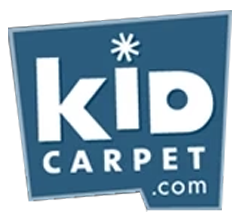Classroom rugs can play a strong role in cognitive development, especially in early childhood education classrooms. Here are some ways in which they contribute:
Language and Literacy Development
Alphabet or story-themed rugs provide visual stimuli that:
1. Promote letter recognition and phonics awareness
2. Develop vocabulary building and narrative thinking
3. Help organize the classroom and students for circle-time storytelling and verbal interaction
Here is an example: A rug with animals can prompt discussions about habitats, sounds, or stories involving the animals.
Spatial Awareness and Organization
Rugs with clear patterns (grids, shapes, roads, letters, etc.) help children:
1. - Understand spatial relationships (e.g., left vs. right, up vs. down)
2. - Develop visual mapping and coordination skills. Our Sensory Path Rugs are a good example of this.
3. - Learn about sequencing by moving from one space to another in order
As an examle: A rug with numbered squares can encourage children to count forward and backward, among other things, to strengthen number sense and directional thinking.
Math and Logic Skills
Some classroom rugs include patterns, numbers, shapes, and grids that support:
1. - Pattern recognition (identifying shapes, colors, sequences)
2. - Counting, addition, and subtraction using visual cues
3. - Games like hopscotch, checkers, chess (such as our Games that Teach Rug) or dice rolling with rugs that reinforce math fluency
Memory and Attention
Designated spots on a rug:
1. - Help children learn routine and structure
2. - Train memory recall when associating areas of the rug with activities or rules
3. - Improve focus by providing a defined personal space during lessons. KidCarpet.com makes most of our squares somewhere around 2’ x 2’ in order to give students enough personal space. Classroom rugs from most other manufacturers on the market offer smaller squares that do not give students enough space.
Creativity and Imagination
Themed rugs (like cities, outer space, jungle, etc.):
1. - Can spark imaginative play, which builds abstract thinking
2. - Can create opportunities for problem-solving in pretend scenarios
3. - Can enhance story creation, which strengthens narrative cognition
Social and Emotional Development
Rugs encourage group interaction:
1. - KidCarpet.com classroom rugs can teach turn-taking and collaborative learning
2. - Our classroom rugs can support conflict resolution when sharing space
3. - Offer a calm, consistent place for emotional balance/regulation
Tip for Educators
Classroom rugs can be used as centers for thematic units (e.g., math rug corner, alphabet rug). So it is not a bad idea to rotate rugs to match the learning objectives. One budget friendly way to do this is share rugs between teachers when practical.
